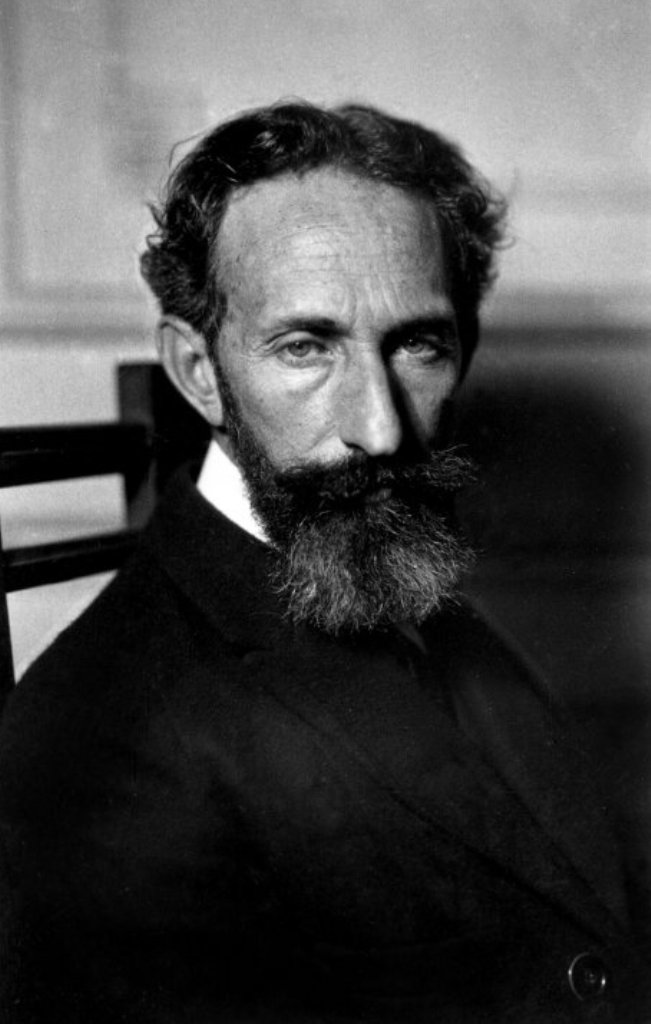Horacio Quiroga was a prominent Uruguayan writer whose works have left an indelible mark on Latin American literature. Born on December 31, 1878, in Salto, Uruguay, he began his artistic journey early in life, publishing his first collection of poems titled Coral Reefs in 1901. Over the next three decades, he would go on to produce more than 200 dark stories that often drew inspiration from the rich and mysterious jungles of South America. His life, however, was marred by tragedy, leading him to struggle with severe depression and ultimately to commit suicide on February 19, 1937, in Buenos Aires, Argentina.
Quiroga's early experiences were fraught with personal loss and hardship. His father’s accidental death during a hunting trip when Quiroga was just a few months old set a tone of tragedy that would follow him throughout his life. This series of unfortunate events, including the suicide of his stepfather and the deaths of his siblings, greatly influenced his writing. His narratives often reflect themes of sorrow, madness, and the dark aspects of human nature, which resonate deeply with readers even today.
As we delve deeper into Quiroga's life, we uncover a complex individual driven by his passion for literature yet haunted by the specters of his past. His journey from a young poet in Uruguay to a master storyteller in Argentina showcases his resilience in the face of adversity. Quiroga's legacy as a pioneer of the modern Latin American short story remains influential, inspiring countless writers and readers worldwide.
Table of Contents
Biography
| Detail | Information |
|---|---|
| Name | Horacio Quiroga |
| Birth Year | 1878 |
| Birth Date | December 31, 1878 |
| Birth City | Salto |
| Birth Country | Uruguay |
| Death Year | 1937 |
| Death Date | February 19, 1937 |
| Death City | Buenos Aires |
| Death Country | Argentina |
Dark Origins
Horacio Quiroga's life was marked by tragedy from the very beginning. His father’s accidental death during a hunting trip shortly after his birth cast a shadow over his early years. This loss was just the first of many that would shape Quiroga’s perspective on life and influence his storytelling. The subsequent suicides in his family and his own personal struggles would color his work, leading him to explore themes of despair and the darker sides of humanity.
As Quiroga grew up, his family moved to Montevideo, the capital of Uruguay. It was here that he began to cultivate his interest in literature, publishing his first short stories and creating a literary magazine. However, tragedy struck again when his stepfather took his own life. This pivotal moment drove Quiroga to seek solace in traveling, leading him to Paris for a period of introspection and artistic growth.
New Beginnings
Returning from Europe in 1900 marked a significant turning point for Quiroga. He settled back in Montevideo and released his first literary collection, The Coral Reefs, in 1901. Though this initial foray into publishing did not gain him widespread recognition, it laid the groundwork for his future success. The collection showcased his budding talent, blending poetry with prose in a way that hinted at the darker themes he would later master.
However, his early career was plagued by personal tragedies, including the deaths of two brothers from typhoid fever that same year. These experiences further deepened his understanding of suffering, which he would later articulate through his haunting stories. The accidental killing of a friend during a duel preparation also left Quiroga grappling with guilt and pushed him to leave Uruguay for Argentina, where he would spend the rest of his life.
Love, Madness, and Death
During his time in Buenos Aires, Quiroga found solace in the nearby jungles, which served as both a backdrop and a source of inspiration for his writing. In 1908, he moved to a farm in Misiones, where he began to publish deeply evocative stories that transported readers into the heart of the jungle, exploring its beauty and brutality. His narratives often reflected his personal struggles with love, loss, and madness, culminating in a unique literary style that resonated with many.
In 1909, Quiroga married Ana Maria Cires, one of his students, and together they faced the challenges of rural life. Despite the joy of welcoming two children into the world, Ana's mental health deteriorated under the pressures of their isolated existence, leading to her tragic suicide in December 1915. This loss profoundly impacted Quiroga, driving him back to Buenos Aires, where he continued to write and work at the Uruguayan consulate.
The Last Years
As Quiroga entered the final years of his life, he continued to produce an impressive body of work, including plays and short stories that solidified his reputation. His later collections, such as The Slaughtered (1920) and Anaconda (1921), showcased his mastery of the short story form. He also ventured into film criticism, reflecting his diverse talents and interests within the literary world.
In 1927, Quiroga remarried Maria Elena Bravo, yet the struggles that had plagued him throughout his life persisted. Despite the challenges, he published his second novel, Past Love, in 1929. Sadly, illness continued to haunt him, and in 1937, after being diagnosed with terminal prostate cancer, Quiroga took his own life, leaving behind a legacy that forever changed Latin American literature.
Quick Facts
- Name: Horacio Quiroga
- Birth Year: 1878
- Birth Date: December 31, 1878
- Birth City: Salto
- Birth Country: Uruguay
- Death Year: 1937
- Death Date: February 19, 1937
- Death City: Buenos Aires
- Death Country: Argentina
Unveiling The Legacy Of Johnny Appleseed: A Journey Through History
Beyoncé Partners With Amazon Music For Exclusive Renaissance Tour Merchandise
The Life And Legacy Of Ursula K. Le Guin (1929-2018)


